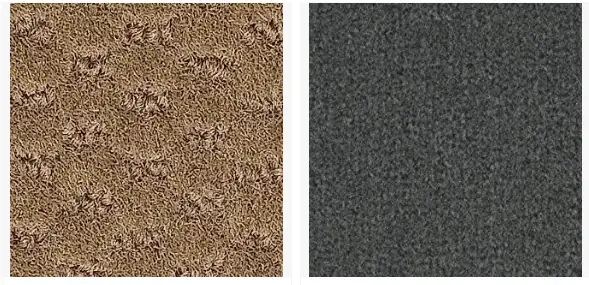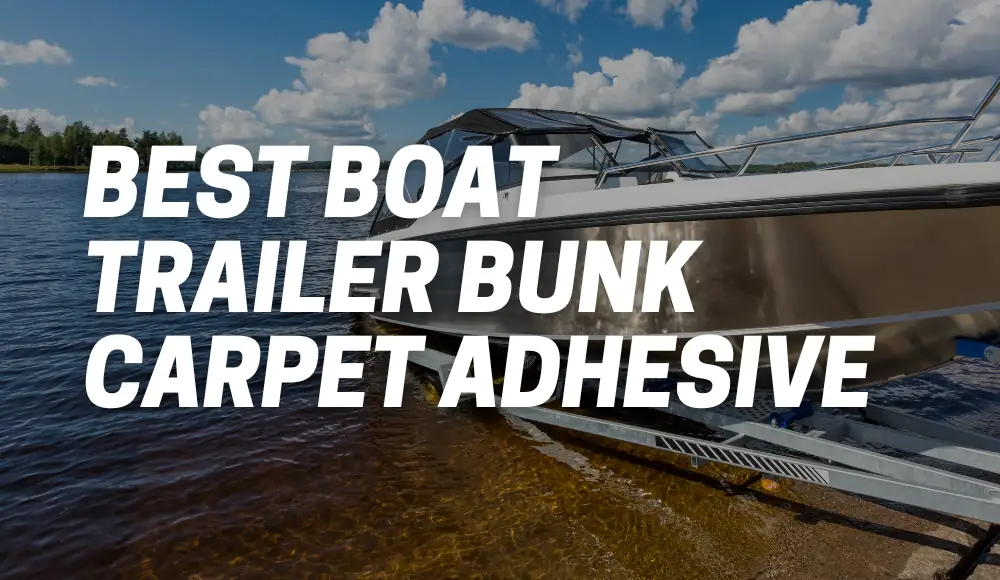If you own a pontoon boat or are considering buying one, you’ve probably come across the dilemma of choosing the right flooring material. Two popular options are pontoon boat carpet and vinyl boat flooring. Both have their advantages and disadvantages and in this article, we’ll delve into the pontoon boat carpet vs vinyl flooring Pros and Cons of each to help you make an informed decision.
What are the Pros and Cons of Marine Carpet?
Pros of Marine Carpet
- Comfortable and Soft: Marine carpet provides a cushioned and comfortable surface for your feet. It offers a pleasant sensation when walking or sitting on it for extended periods, enhancing the overall boating experience.
- Non-Slip Surface: Marine carpet typically has a textured surface, which helps prevent slips and falls, especially when the deck is wet. This feature is particularly important for ensuring safety on a pontoon boat.
- Noise Reduction: Pontoon boats can get noisy due to engine vibrations and water splashes. Marine carpet acts as a sound barrier, reducing noise levels and making your boating experience more peaceful.
- Insulation: Carpet provides thermal insulation, which can help keep the boat’s interior warmer in cooler weather conditions. This is especially beneficial if you plan to use your pontoon boat during colder seasons.
Cons of Marine Carpet
- Maintenance: Marine carpet requires regular maintenance to keep it clean and in good condition. It can accumulate dirt, stains, and moisture, which may lead to mold and mildew growth if not properly cared for.
- Durability: Compared to other flooring options, marine carpet may not be as durable. Over time, it can wear out, fade, or fray, especially in high-traffic areas. Sun exposure and constant moisture can also contribute to its deterioration.
- Water Retention: While marine carpet is designed to resist water to some extent, it can retain moisture if not adequately dried. This can lead to a damp environment, which may promote the growth of mold and unpleasant odors.
Beware of Mold and Mildew
While pontoon boat carpet has many advantages, it also has some potential drawbacks to consider before investing in this type of flooring.
One major issue with carpeted floors is their susceptibility to mold and mildew growth.
The moist environment in a pontoon boat can promote the growth of these harmful microorganisms if not cleaned properly. Cleaning a carpeted surface can be difficult too.
Dirt, food debris, and stains can get embedded deep within the fibers, making them hard to remove without professional cleaning services. This means that regular maintenance like vacuuming or scrubbing may not be enough to keep your carpet looking good as new.
Despite these issues, many still prefer pontoon boat carpets because of their superior comfort level and slip-resistant properties.
If you do decide to install one on your boat, make sure you stay on top of maintenance by regularly cleaning it with soapy water to prevent mold build-up.
What is Pontoon Carpet Made Of?
Pontoon boat carpet is typically made of synthetic fibers such as polypropylene or polyethylene.
These materials are chosen for their resistance to water, UV rays, and general wear and tear. The carpet fibers are often tufted or looped to create a textured surface that enhances grip and provides a cushioned feel.
Which is Better: Carpet or Vinyl for Pontoon Boat?
Choosing between pontoon boat carpet and marine vinyl flooring depends on your preferences and specific needs.
Let’s explore the pros and cons of vinyl boat flooring to help you make a well-rounded decision.
Pros of Vinyl Boat Flooring
- Durability: Vinyl boat flooring is known for its exceptional durability. It can withstand heavy foot traffic, UV exposure, and moisture without losing its quality. Vinyl flooring is also resistant to stains, scratches, and fading.
- Low Maintenance: Vinyl flooring is easy to clean and maintain. It doesn’t require extensive scrubbing or specialized cleaning agents. Regular sweeping and occasional mopping are usually sufficient to keep it in good condition.
- Variety of Designs: Vinyl boat flooring offers a wide range of design options to suit different tastes and boat interiors. You can choose from various colors, patterns, and textures, allowing you to customize the look of your pontoon boat.
Cons of Vinyl Boat Flooring
- Hard Surface: Unlike carpet, vinyl flooring is harder and less forgiving on your feet. If comfort is a priority for you, consider adding extra cushions or floor mats to soften the surface.
- Slick when Wet: Vinyl boat flooring can become slippery when wet. To mitigate this, opt for textured or non-slip varieties of vinyl flooring, which provide better traction and reduce the risk of accidents.
- Heat Absorption: Vinyl flooring tends to absorb heat from the sun, which can make the boat’s interior warmer on hot days. This may require additional measures to keep the cabin cool, such as using shades or ventilation.
Pontoon Boat Carpet vs Vinyl Boat Flooring: User Advice
Here are some main points on Pontoon Boat Carpet vs Vinyl Boat Flooring shared by boat owners on the Internet:
| Pros | Cons |
|---|---|
| Vinyl is convenient and easy to care for. | Vinyl can be slightly slippery at times. |
| Vinyl is easy to clean and has zero water retention. | Vinyl shows dirt more than carpet. |
| Vinyl is safer in frosty conditions. | Vinyl may be slippery in certain situations. |
| Carpet is easy on the body and provides safety. | Vinyl can become slippery at times. |
| Vinyl is easier to clean and lasts longer. | Carpet stains and wears quickly in high-traffic areas. |
| Vinyl is easy to clean, but rough on bare feet. | Carpet mutes sound, while vinyl can be noisier. |
| Carpet requires minimal cleaning and looks good. | Carpet can wear out faster due to sand and dirt. |
| Vinyl is easy to maintain and doesn’t get slippery. | Vinyl can get slick when exposed to hail or ice. |
| Vinyl is easy to clean and maintain. | Vinyl can be slippery, especially in the cockpit area with more depth. |
| Snap-in carpet offers the best of both worlds. | |
| Carpet is more pleasant and requires care. | Dark-colored carpet shows dirt easily. |
| Quality carpet is suitable for real fishermen. | Carpet can become messy with live bait. |
| Snap-in carpet is easier to clean and doesn’t get hot. | Vinyl in light colors doesn’t get too hot to walk on. |
| Prefers vinyl in the cockpit area. | |
| Vinyl is easy to clean, especially with live bait. | |
| Vinyl is preferable for those who fish a lot or have dogs. | |
| Carpet provides comfort and a good look. | Vinyl can get hot and start peeling at the edges. |
| Vinyl is easy to clean and forgiving with spills. | Vinyl might weigh slightly less than carpet, especially when wet and filled with sand. |
Can I Use Vinyl Plank Flooring on a Pontoon Boat?
Yes, you can use vinyl plank flooring on a pontoon boat. Vinyl plank flooring is a popular choice due to its durability and water-resistant properties.
It mimics the appearance of real wood while offering the benefits of vinyl, such as easy maintenance and affordability. Make sure to choose a high-quality vinyl plank specifically designed for marine environments.
Is Vinyl as Warm as Carpet?
No, vinyl flooring is not as warm as carpet.
Carpet provides better insulation and warmth, particularly in colder weather. Vinyl, on the other hand, tends to reflect the ambient temperature and may feel cooler to the touch.
If maintaining a warm interior is important to you, carpet may be a better option.
How Much Does it Cost to Replace Pontoon Carpet with Vinyl?
Which is cheaper vinyl or carpet?
The cost of replacing pontoon carpet with vinyl flooring depends on various factors, including the size of your boat, the quality of materials chosen, and whether you plan to install it yourself or hire a professional.
On average, you can expect to spend anywhere from $500 to $2000 and more for materials and installation. It’s advisable to obtain quotes from different suppliers or contractors to get a better idea of the overall cost.
How to Remove Carpet on a Pontoon Boat
Before to start to replace pontoon boat carpet with vinyl you need to remove the old carpet.
Removing carpet from a pontoon boat can be a time-consuming process but is relatively straightforward.
Here’s a general outline of the steps involved:
- Prepare the Boat: Clear the boat of any belongings, furniture, or fixtures to access the carpeted areas more easily.
- Start at the Edges: Begin by pulling up the edges of the carpet using a pair of pliers or a carpet removal tool. Take care not to damage the underlying flooring or structure.
- Work in Sections: Once the edges are loosened, work in sections, pulling the carpet away from the adhesive or fasteners securing it to the boat. You may need to use additional tools like a scraper or putty knife to assist in this process.
- Clean the Surface: After removing the carpet, thoroughly clean the surface to remove any adhesive residue or debris. You can use a solvent or adhesive remover, following the manufacturer’s instructions, and scrub the surface with a brush or sponge.
- Inspect and Repair: Inspect the underlying flooring for any damage or signs of wear. Repair or replace any damaged sections before proceeding with the installation of the new flooring.
—
Maintenance Tips
Cleaning Pontoon Boat Carpet
If you’ve opted for carpet flooring, it’s important to keep it clean. Sweep or vacuum the carpet regularly to prevent dirt and debris from getting ground in. Be careful when using cleaning products, as some harsh chemicals may damage the carpet fibers.
If you do need to use a cleaner, opt for a mild detergent mixed with water. Apply the solution with a soft-bristled brush and rinse thoroughly with water afterward.
Maintaining Vinyl Flooring
Vinyl flooring is generally easier to maintain than carpet because it’s less prone to staining and mold/mildew growth. However, it’s still important to keep vinyl flooring clean and free of debris.
Sweep or hose down the flooring after each use, paying particular attention to any areas with standing water or stains. Avoid using abrasive cleaning tools that could scratch the surface of the vinyl.
FAQs
What is the best flooring for inside a boat?
The best flooring for inside a boat depends on your preferences, needs, and budget. Marine carpet offers comfort and insulation, while vinyl boat flooring provides durability and easy maintenance. Consider the pros and cons of each option to make an informed choice.
What is the easiest boat flooring to install?
Vinyl plank flooring is generally considered one of the easiest boat floorings to install. It often comes in interlocking or adhesive-backed formats, allowing for straightforward installation without the need for specialized tools or extensive expertise.
Conclusion
Choosing between pontoon boat carpet and vinyl boat flooring boils down to your priorities and preferences. If comfort, noise reduction, and insulation are crucial factors for you, marine carpet might be the better option.
On the other hand, if durability, low maintenance, and design versatility are more important, vinyl boat flooring is worth considering.
Assess your needs, weigh the pros and cons, and select the flooring material that best suits your pontoon boat lifestyle.




